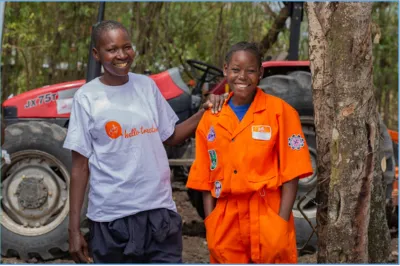Resilience at All Levels: From Macro-Insurance Solutions to Micro
The first blog in this series outlined CGAP’s research on how insurance can help build a green, resilient, inclusive future for all. In recent years, insurance has been increasingly recognized as an important financing tool to support countries and communities facing multiple crises and uncertainty. The United Nations Development Programme (UNDP) highlighted insurance as one of three key pillars to help humankind respond to increasing uncertainty in its 2021/2022 Human Development Report, and the Summit for a New Global Financing Pact named insurance as one of the financial instruments to increase climate resilience.
But in all these discussions, it can feel like we’re talking more about the role of insurance on a macro level, that is, insurance for governments, and not enough about how insurance can, at the micro level, directly help low-income people – like smallholder farmers, small business owners, and migrant workers– become more resilient. Esther Duflo, in a recent article published in Le Monde, suggested compensation from loss and damage funding go directly to the world’s poorest citizens to help them adapt to climate change. Insurance can be one mechanism to help provide compensation directly to vulnerable populations, but this will require more innovation at the micro-level.
From macro insurance to micro
Programs such as one from UNDP, IDF, and BMZ have been pioneering innovative insurance solutions for governments at both national and sub-national levels. The goal of these programs is not only to support governments in managing climate and disaster risk but also to support vulnerable communities and populations in doing the same. Although these programs are generally designed with governments as policyholders, i.e. “macro” solutions, to deliver solutions that protect vulnerable communities and populations, reinsurers, insurers, governments, and donors need to consider the micro level as well. Applying macro solutions while considering the micro-level can be done by:
a) Designing the last mile distribution strategy when developing macro solutions. For instance, in a recent project in Mexico, the government was a policyholder for an agricultural insurance scheme, but insurance payouts went directly to smallholder farmers. In a UNCDF program in Fiji, the government’s Department of Social Welfare is a partner, but payments are made directly to social welfare recipients.
b) Creating new programs focused on providing access to insurance for low-income populations in new and innovative ways such as programs run with large multinationals like L’Oreal or Nespresso to provide insurance solutions for their raw materials sourcing networks.
We need to develop more initiatives like these that foster greater innovations to reach end beneficiaries.
Turning macro-level learnings into micro-level solutions
In CGAP’s research, we found tools such as Oasis and CLIMADA are supporting governments in catastrophe risk modeling by providing access to data for risk assessment so they can better understand and plan for disasters. Likewise, there are frameworks to support governments in understanding the financing instruments available to fund losses from disasters and the costs and benefits of each.
But why not learn from these macro developments and apply the same thinking at a micro level? And in the same way that governments consider different financial tools such as contingency credit, reserve funds, and insurance to fund disaster losses, funders, and financial service providers could also look at different financial services to help households face risk.
Toward a more coordinated approach
Solutions at a macro level and a micro level are complementary. If we can provide people with insurance before a disaster, we can reduce their vulnerability and support their resilience. If people can manage risk, they can then take on more risk and grow economically, making them less likely to fall into poverty when faced with an adverse shock.
If citizens are better protected against risks, then communities – and nations – are more resilient.




Add new comment